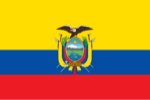The Ecuadorian Navy is a compact and balanced maritime force primarily focused on safeguarding the nation's maritime interests, which include a 2,237 km coastline and the strategically important Galápagos Islands. Its maritime strategy revolves around surveillance and protection of its territorial waters and Exclusive Economic Zone (EEZ), with key missions including counter-narcotics, anti-piracy operations, and fisheries enforcement. The navy's operational capabilities are geared towards coastal defense, limited sea control, and maritime security operations rather than significant blue-water power projection.
The surface fleet's principal combatants consist of two *Condell*-class frigates and a flotilla of six *Esmeraldas*-class corvettes. While the frigates, acquired from Chile, provide some anti-submarine and anti-surface warfare capabilities, the Italian-built corvettes form the backbone of the surface force, equipped with anti-ship and surface-to-air missiles. These are complemented by a number of fast attack craft and a larger contingent of patrol vessels operated by the Coast Guard, which is essential for sovereignty and law enforcement missions in the vast EEZ.
A key element of Ecuador's naval capability is its submarine force, comprising two Type 209/1300 submarines, the BAE *Shyri* and BAE *Huancavilca*. These platforms provide a significant asymmetric advantage, capable of underwater surveillance, intelligence gathering, and defensive sea denial. Recognizing their strategic value, both submarines underwent significant modernization and refitting programs in Chilean shipyards to extend their service life and upgrade their combat systems.
Ecuador possesses a modest domestic shipbuilding and maintenance capacity centered on the state-run shipyard, ASTINAVE. This facility has been crucial for refitting existing vessels, including the *Esmeraldas*-class corvettes, and has undertaken the construction of patrol vessels and auxiliary ships. A notable recent project is the construction of a new multipurpose vessel, which will enhance the navy's logistical and support capabilities. The Naval Aviation arm provides limited maritime patrol and surveillance capabilities with a mix of fixed-wing aircraft and helicopters, recently augmented by unmanned aerial vehicles (UAVs) to improve coastal monitoring. The 1,700-strong Marine Corps is organized for coastal defense and special operations but has limited amphibious assault capacity.
